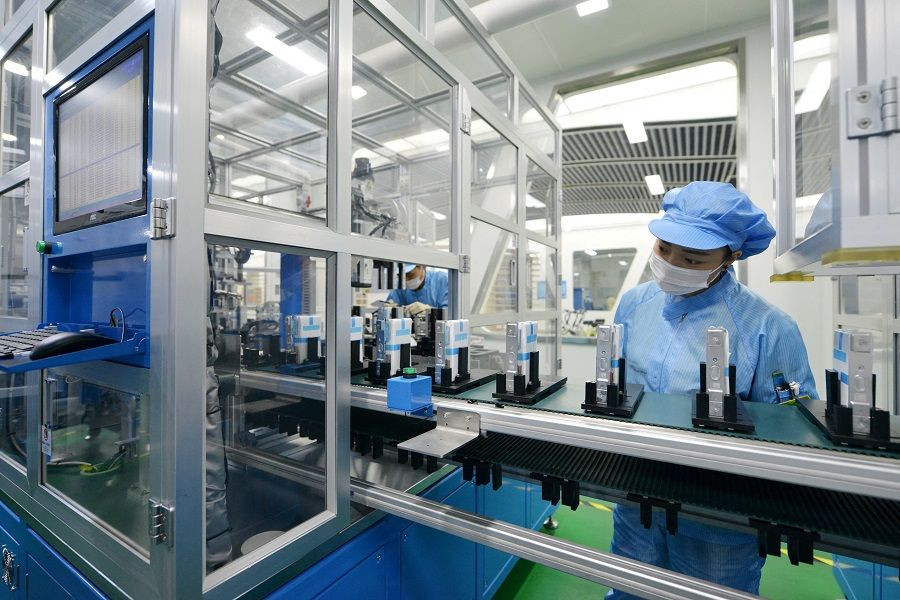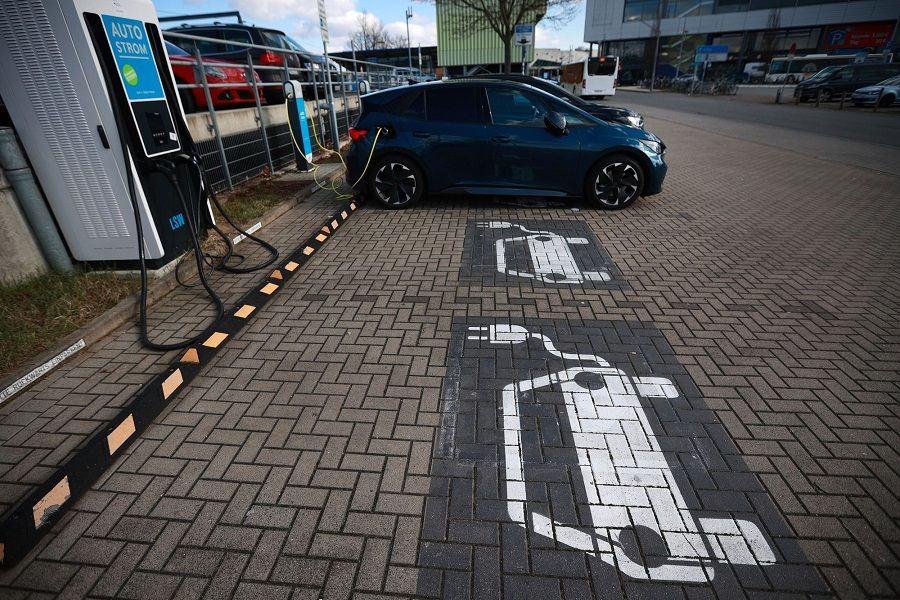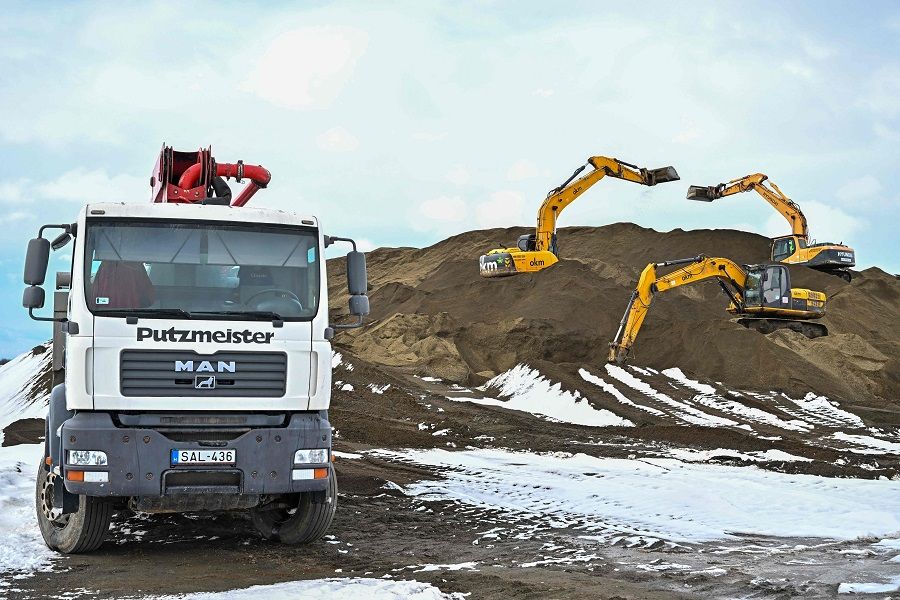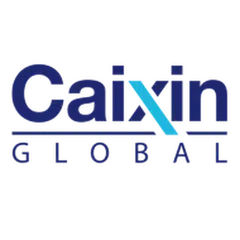The world's EV supply chain is fracturing

(By Caixin journalists Luo Guoping, Lu Yutong and Bonnie Cao)
Chinese makers of electric vehicles (EVs) and batteries are bracing for a sweeping restructuring of the global lithium industrial chain long dominated by China.
Since the pandemic and Russia-Ukraine war heightened energy security concerns, the US and the European Union (EU) are taking steps to create their own EV supply chains in the spirit of "the closer, the safer". The shakeup means that costs will rise, driving dramatic changes in the sourcing of raw materials and labour, which is likely to benefit places such as Indonesia.
"China, Europe and the US will form three relatively independent regional markets with corresponding industrial chains," Teng Yong, a global partner at consulting firm A.T. Kearney, told Caixin.
Reorganisation of global industrial chain
Until now, China has held a dominant position in the industrial chain from cathode materials to EV battery manufacturing and vehicle production, supplying nearly half of global core products. In 2022, China sold 63.6% of global EVs and shipped 69% of the world's lithium-ion batteries, according to research institution EV Tank. Last year, China shipped 85.5% of the world's positive electrode materials and 92.7% of negative electrode materials, the group said.
Expediting the regionalisation of the supply chain was US President Joe Biden's so-called Inflation Reduction Act, signed into law in August 2022. The industrial policy measure aims to encourage investments in domestic manufacturing and procurement of critical materials at home or from free-trade partners and to jump-start investment in advanced clean technologies.

The law extended tax credits for US-based EV companies and imposed tight restrictions on sourcing of EV batteries and raw materials with a goal of building an independent supply chain. The legislation's list of eligible sources includes countries that have free trade agreements with the US such as Australia, Canada, Chile, South Korea, Mexico and 20 others.
The measure will promote the differentiation and reorganisation of the global industrial chain rather than complete deglobalisation, said Bo Shaochuan, an independent director of Zijin Mining and China Minmetals Resources. The effect will be the formation of new industrial chains that reduce dependence on China, Bo said.
China may face a supply chain shortfall as demand increases. More than 50% of the key minerals such as lithium, cobalt and nickel rely on foreign markets.
The EU opposed the American law as most European countries were not on the list. It recently introduced its own Green Deal Industrial Plan to promote the competitiveness of EU countries.
Nickel, cobalt and lithium are the core raw materials for batteries. Lithium sources are mainly Argentina, Chile and Bolivia in South America, while nickel resources are mainly concentrated in Indonesia and the Philippines. Most cobalt resources come from African countries such as the Democratic Republic of the Congo.

Previously, the battery processing industrial chain was concentrated in China, Japan and South Korea. Since 2009, China has invested more than 100 billion RMB (US$14.4 billion) in EV subsidies. The enormous Chinese market has enough room for trial and error, according to Xu Aidong, chief analyst of Beijing-based Antaike Research.
"Over the years, China has developed many world-leading companies that formed a complete lithium battery industrial chain," Xu said.
Changing market landscape
Lured by high prices, countries with metal resources and production capacity are also trying to integrate into the global supply chain for more profits, including Australia, Indonesia and some South American and African countries. Initiatives by such countries are intended to expand control over strategic resources and the corresponding supply chain, according to Sun Jingwen, assistant director of the Institute of Minmetals Securities.
"These actions are profoundly changing the market landscape," Sun said. "Today, Chinese companies need to think about where to export and who to foot the bill. China needs to find a market that matches its large and efficient industrial chain, while Chinese battery companies should be innovative."
China may face a supply chain shortfall as demand increases. More than 50% of the key minerals such as lithium, cobalt and nickel rely on foreign markets.
"Chinese EV battery companies need to plan ahead to mitigate supply chain risks in the next few years." A.T. Kearney's Teng said.
Chinese auto companies will not easily surrender markets in Europe and America, and Chinese EV battery material and equipment enterprises are looking for alternatives.

Companies in the industry are already feeling the effects of the supply chain restructuring, executives told Caixin. For example, companies need to think through mineral purchases and product sales when investing abroad. For sales to North America, businesses will need to establish supply chains in regions specified by the US.
Chinese auto companies will not easily surrender markets in Europe and America, and Chinese EV battery material and equipment enterprises are looking for alternatives. Chinese companies still have development opportunities abroad, according to Teng.
"Europe is the most important region for Chinese battery companies to expand internationally," he said. Chinese EV battery companies should actively build localisation capability in each region and expand processing, sales and operation capability in addition to mining, Teng said.
With rising costs amid the global supply and industrial chain restructuring, many resources will shift to labour-intensive regions such as Indonesia, according to Antiake's Xu, and Chinese companies should proactively join that process.
"Geopolitics has always been complex, and regionalised trade flows are the norms," said an executive at Canada-traded Ivanhoe Mining. "Chinese companies should progress with time and adjust their strategies accordingly."
'China-plus' strategy
Over the past two years, Chinese and foreign companies have adopted the "China-Plus" strategy, also known as "China+1" or "China+N", driven by the pandemic and the Russia-Ukraine war. The strategy aims to transfer parts of China's industrial chain to one or more other countries, increase ties with other regions and build diversified industrial chains and resource bases to increase opportunities for entering new markets.
Through its Inflation Reduction Act, the US is attempting to lure allied countries with generous subsidies and to build a supply chain from resources to materials to batteries to vehicles, making EVs a strategic emerging industry for future competition among great powers. One potential supply chain restructuring plan under evaluation by many companies is to source raw materials from Australia and South America, ship them to Canada or Mexico for processing and finally assemble batteries and EVs in the US.
The Biden bill has pushed EV makers to seek more opportunities to procure materials from the US or its free trade agreement partners, Stephen Brown, senior director at Fitch Ratings, told Caixin. This could in turn affect the global supply chain for EV battery materials, but it is unclear how quickly and to what extent the impact will be felt. Supply chain adjustments cannot be made overnight and usually take years, Brown said.

Most of the EV supply chain is currently based in China. Building a supply chain in North America means establishing new battery companies in the US as required by the industrial policy measure. South Korea's SK Inc. and LG Energy Solution, the world's second largest EV battery producer, are expected to be the main players in addition to American companies.
Some Chinese companies are considering Eastern European countries.
LG plans to increase EV battery capacity 170% to 540 gigawatt-hours (GWh) by 2025 from 200 GWh in 2022, with 40%-50% of it in North America. LG is working with General Motors and Honda to build four battery plants in the US and with Stellantis on a battery plant in Canada.
If the US wants a closed market, the costs will be 15%-20% higher than in China, with consumers and government subsidies paying for it, estimated A.T. Kearney's Teng. That will hurt not only local industry in the US but also Chinese companies that will lose US business, Teng said. It will take three to five years for the US to establish an EV industry, and it's uncertain whether Korean companies can help it achieve the goal, according to Teng.
Most US car producers won't be able to meet the Inflation Reduction Act's requirements for raw materials and other metrics, said John Bozzella, chairman of the American Automotive Innovation Alliance. It will also affect the US goal of EVs accounting for 40%-50% of vehicle sales by 2030, he said.
Developing the North American supply chain will take global investment and resources, according to an executive at a large Chinese lithium battery company. For companies, the key lies in project fundamentals and whether investments can generate returns. Government subsidies are limited and highly uncertain for users and businesses. Companies are taking a wait-and-see position on the details of the Biden measure before making further decisions, the executive said.
Leading mining companies told Caixin that they are considering building plants and selling locally in South America in an attempt to create multiple industrial chains.

Some Chinese companies are considering Eastern European countries. In 2022, Chinese battery giants Contemporary Amperex Technology Ltd. (CATL) and Eve Energy Co. Ltd. announced battery plants in Hungary. China's CALB Group Co. Ltd. built its first overseas factory in Portugal. CATL is planning an independent supply chain in Europe, Caixin learned.
Indonesia gold rush
Indonesia has become an option for Chinese companies to build nearshore industrial chains, given its location and cultural proximity. Meanwhile, Japanese, Korean, European and American companies are also eyeing Indonesia as a potential investment destination.
South Korea's LG and Hyundai Motor kicked off the first phase of their US$9.8 billion joint investment in Indonesia, starting construction of a US$1.1 billion battery plant there in September 2021. It became the first local battery factory in Indonesia, with operation scheduled to start in 2024. In March 2022, Hyundai established the country's first EV plant. In April 2022, CATL announced plans to spend US$6 billion to build an EV battery industrial chain in Indonesia.
German chemical giant BASF and French mining giant Eramet will invest 2.4 billion euros (US$2.5 billion) to build a joint-venture nickel smelting plant in Indonesia for EV battery materials, the country's Ministry of Investment disclosed in January. In August last year, Tesla and Indonesian nickel processing enterprises signed a US$5 billion nickel procurement agreement.

Indonesia today is like China a decade or so ago, with abundant labour and a large market, according to several Chinese executives following recent visits to Indonesia.
"We will have a two-way strategy in the future: find and supply foreign resources to customers overseas, while serving Chinese customers with domestic resources." - Chinese mining company executive
"We can mine and process in Indonesia and sell to Japanese and Korean customers, which will then sell to the European market," said an executive of a Chinese mining company that has a factory in Indonesia. This could meet the European demand for an independent supply chain, despite increased cost. "We will have a two-way strategy in the future: find and supply foreign resources to customers overseas, while serving Chinese customers with domestic resources," the person said.
Indonesia is close to consumer markets in China, Japan and South Korea, and the surrounding ten-member Association of Southeast Asian Nations holds large market development potential, according to Antiake's Xu.
But other executives are more cautious. The Indonesia market for EVs and EV batteries is still not big, said a Chinese businessman who had operations there. While the Indonesian government has been promoting renewable energy, its lack of financial resources with no subsidy plans result in a small local market, the person said.
This article was first published by Caixin Global as "In Depth: The World's EV Supply Chain Is Fracturing". Caixin Global is one of the most respected sources for macroeconomic, financial and business news and information about China.
